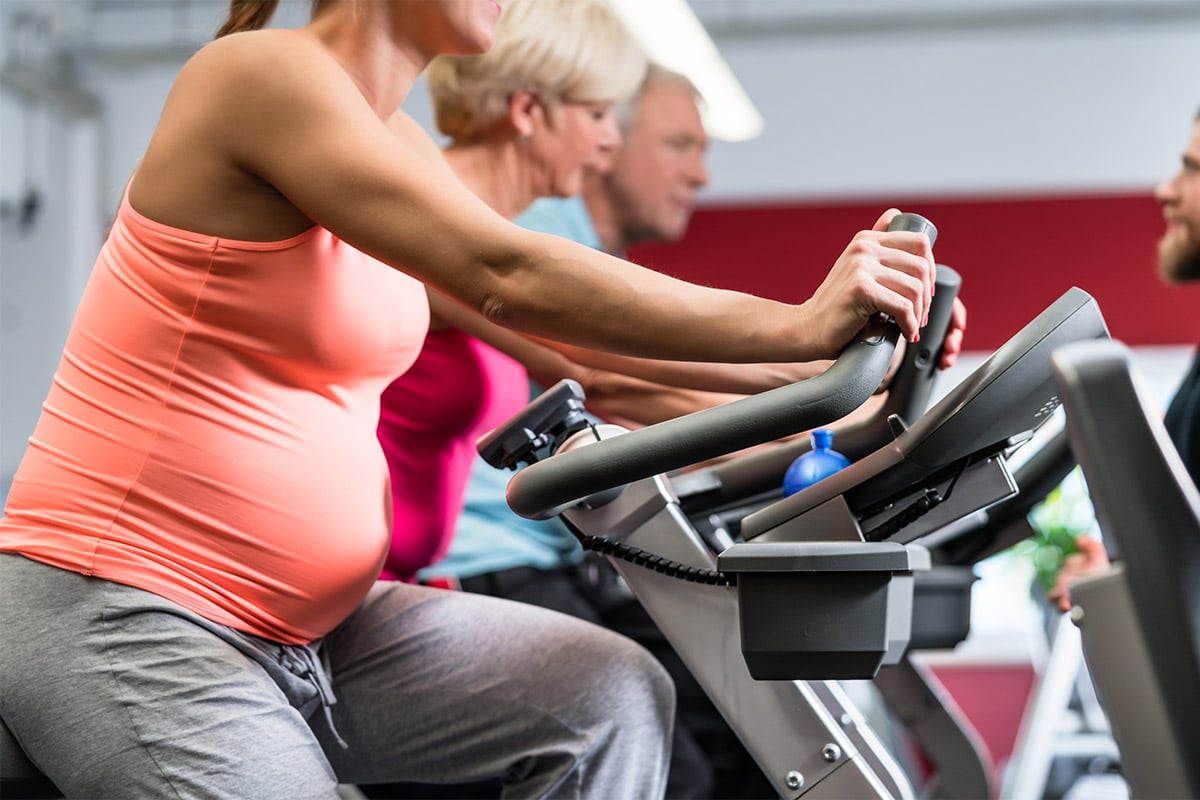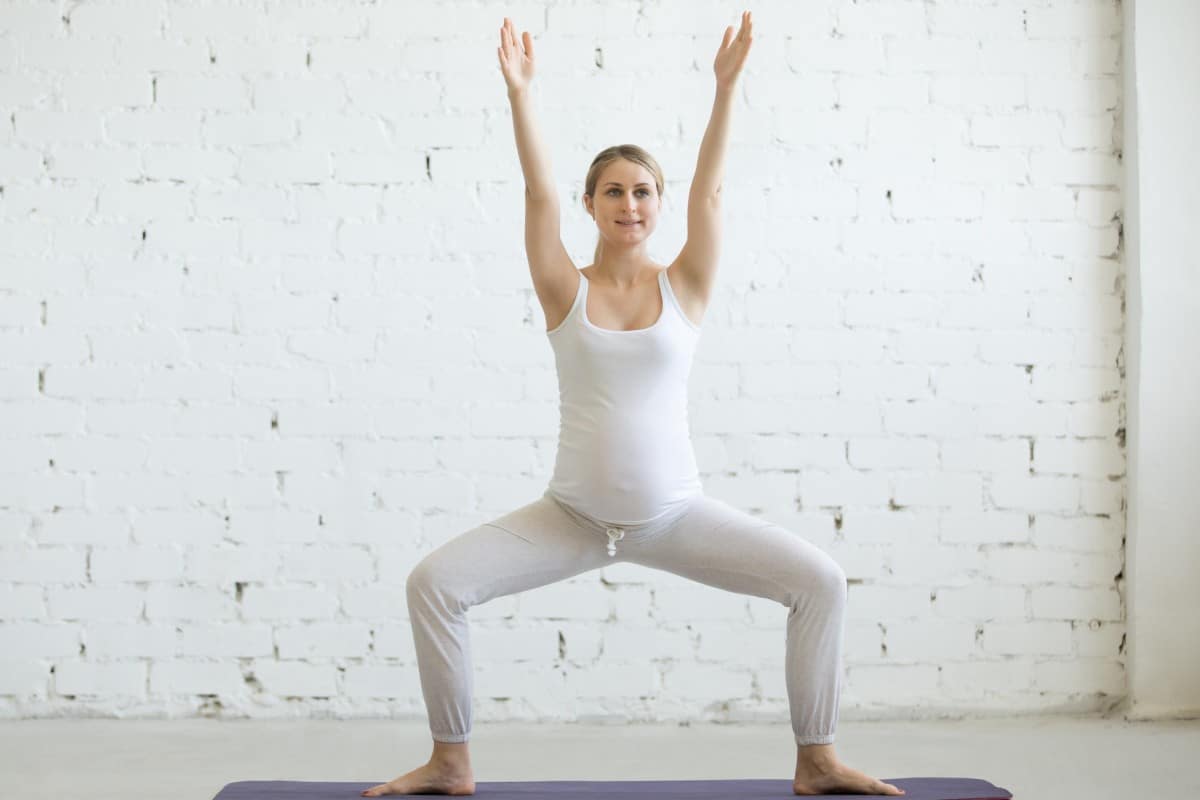Regular exercise during pregnancy can promote health, reduce the chances of excess weight gain, and conceivably make childbirth easier.
Exercise during pregnancy can help a woman’s mental and biological health and provide the newborn with a more healthy beginning.
However, researchers suggest that about 40% of pregnant women workout. Recent guidelines suggest that at a minimum of 150 minutes per week of moderate-intensity aerobic exercise, both during and after pregnancy are needed.
A workout slot shouldn’t be extended, meaning women can exercise five times a week for 30 minutes or 10 times per week for 15 minutes.
Women who do more strenuous activities like running, before getting pregnant may often resume their existing routine, but they should consult first with their doctor before they proceed.
Six kinds of exercise to remain fit and active
Here are some activities that can be done during pregnancy:
Brisk walking

If pre-pregnancy exercise levels were low, a timely stroll around the community is an excellent way to begin.
This activity has various benefits, which include:
- Providing a cardiovascular exercise with reasonably little effect on the knees and ankles
- Women can begin from home, and it requires no cost
- It is possible to stroll nearly anywhere and at any moment during pregnancy
- Friends and other household members can join for company
Be careful by choosing smooth grounds, putting on supportive footwear to prevent falling, and avoid rocks, potholes, and other obstacles.
Swimming

Swimming, walking in water, and aqua aerobics enable movement without putting pressure on the joints. Buoyancy could offer some comfort from the additional bodyweight as the pregnancy advances.
It is essential to select a stroke that you feel comfortable with and doesn’t hurt your shoulders, neck, or back muscles. Breaststroke might be the right option for this, and making use of a kickboard can assist in strengthening the leg as well as the buttock muscles.
Safety tips:
- Make use of the railing as support when entering the pool to prevent slipping
- Abstain from jumping or diving as this could affect your abdomen
- Avoid hot tubs, warm pools, steam rooms, and saunas to reduce the danger of overheating
Stationary cycling

Cycling on a static bike is also known as spinning. It is safe for the majority of women during pregnancy, especially those exercising for the first time.
Benefits of cycling include:
- Cycling helps in raising the heart rate while reducing stress on the pelvis and joints
- The bike assists in supporting the bodyweight
- As the bike is static, the chance of falling is less
Yoga

Prenatal yoga lessons can assist women in keeping their joints fit and promoting flexibility. Yoga could also aid with stress and pain management.
The advantages of yoga include:
- Enhancing the muscles
- Facilitating blood circulation
- Assist in maintaining a healthy blood pressure
- Improving flexibility
- Increasing relaxation
- Teaching methods that help women remain calm during labor and delivery
Safety tips
As pregnancy advances, be mindful of postures that:
- Could lead to overbalancing
- Could require you lying on the abdomen
- Would warrant you spending time lying straight on the back
Lying flat on your back may cause the weight of the bump to exert too much pressure on prominent veins and arteries, decreasing blood flow to your heart. This reduced blood flow can cause a pregnant woman to faint.
Women should avoid overstretching, as this could cause unwanted pain. Practicing yoga reduces the risk of injury, benefit the entire body, and are usually safe to do until delivery
Aerobics with little impact
In low impact aerobic exercise, at least one foot remains on the ground every time.
This kind of workout can:
- Enhance the heart and lungs
- Help strengthen muscle tone and balance
- Reduce stress on the joints
Several classes are developed mainly for pregnant women. This can be an excellent means of meeting other individuals and train with a guide that is qualified to satisfy the specific needs of pregnant women.
Women that visit a regular aerobics class should allow the instructor to know that they are pregnant, so the coach can modify exercises where necessary and educate about suitable activities.
Squatting and pelvic tilts
Several activities are helpful during pregnancy because they equip the body for labor and childbirth.
Squatting

Squatting could assist in opening the pelvis during labor. This might be an excellent idea to test during pregnancy.
- Stand on your feet shoulder-width apart and keep the back straight
- Lower your buttocks down gradually, maintaining the feet flat and the knees no further ahead than the feet
- Grip for 10 – 30 seconds at the lowest level, then gradually push up.
Pelvic tilts
These can enhance the abdominal muscles and assist in reducing back pain.
- Begin on the hands and knees
- Push your hips forward and tug your abdomen in, rounding the back
- Hold for some seconds
- Release and allow your back to drop
- Repeat the process up to 10 times
Kegel workouts
Kegel exercises strengthens the muscles in the pelvic floor. Strong pelvic muscles will assist the woman in pushing during delivery and lessen the chance of urine leakage after that.
Advantages of Exercising during pregnancy
During pregnancy, exercising can assist by:
- Improving the heart rate and circulation
- Lessening the chance of obesity and affiliated complications, that include hypertension and gestational diabetes
- Preventing constipation, backache, varicose veins, and other pregnancy complications
- Boosting flexibility of the body and keeping it strong
- Aiding and regulating healthy weight gain
- Equipping the muscles for labor and delivery
- Preventing intense vein thrombosis
- Enhancing sleep and emotional health
It could also help:
- Reduce labor and lessen the need for treatment and pain relief
- Decrease the chance of a preterm or cesarean labor
- Speed up healing after delivery
- provide the infant with a healthier beginning
Study indicates that there might also be advantages for the baby that include:
- A shorter fetal heart rate
- A healthier delivery weight
- A lower fat mass
- Better stress tolerance
- Improved nervous system
Pointers
Biological differences during pregnancy place more requests on the body, so it is significant to exercise with care. Women that were athletic before pregnancy and healthy during it can always proceed as before. This may include organizing their program as the pregnancy advances.
Women who weren’t active before pregnancy can begin with a soft-intensity program, while slowly increasing their workout levels.
Extra tips
A few pointers can assist people in staying safe when exercising. It is appropriate to start by warming up for about 5 minutes and stretching for 5 minutes.
You can then complete the session with 5 to 10 minutes of slower workout, ending with delicate stretching.
Here are a few helpful tips:
- Put on loose-fitting, comfortable clothes, and a right support bra
- Select supportive shoes specific to the workout type to help curb injury
- Wear compression socks if you notice the legs are swelling
- Ensure to do your workout on a flat, level surface to avoid injury
- Avert overheating during exercising
- Consume plenty of water before, during, and after a routine to remain hydrated
- Stand up gradually to stave off dizziness
- Monitor the impact of every movement and modify them if necessary as the pregnancy proceeds
Keep in mind that :
- The body requires more oxygen and energy during pregnancy
- The hormone relaxin that the body generates during pregnancy prompts the ligaments that aid the joints in stretching and increases the chance of injury
- Weight differences influence the center of gravity, putting more strain on the joints and muscles in the lower back and pelvis, increasing the likelihood of losing balance.
Who shouldn’t workout?
Individuals with medical conditions like asthma, diabetes, hypertension, heart disease, or a pregnancy-related circumstance should converse with their doctor before altering their exercise patterns.
The consultant might recommend resting if a woman has:
- A weak cervix
- Spotting or vaginal bleeding
- A history or chance of pregnancy loss or preterm childbirth
- A low placenta or placenta previa
Your doctor can assist in developing a procedure to suit your need.
Sports or exercise you should avoid
Some kinds of workouts aren’t favorable during pregnancy, and they include:
- Scuba diving
- Few contact games like kickboxing and judo
- Activity that occurs above an altitude of nearly 8,000 feet
- Heavy weightlifting or actions that require straining
These actions could involve additional risks that include injury and altitude sickness. Activities with the possibility of falling, such as hockey, downhill skiing, and cycling, might also not be suitable.
When you should stop exercising
End the exercise and seek medical guidance if any of the following occurs:
- Pains in areas that include the stomach, pelvic, or chest
- Tiredness or fatigue
- Nausea
- Faintness or dizziness
- Muscle cramps
- Vaginal bleeding
- An irregular heartbeat
- Feeling cold or clammy
- Abrupt swelling in the hands, ankles, and face
- Trouble walking
- Leakage of amniotic fluid
- Intensified shortness of breath
- Contractions that persist after rest
- A decrease in the baby’s movement
Regular physical workout can increase the health of the woman as well as the baby, and it might make pregnancy, childbirth, and post-delivery recovery more comfortable.
Nevertheless, it is essential to remain safe during training, so women should consult a specialist before making any modifications as their pregnancy advances.








